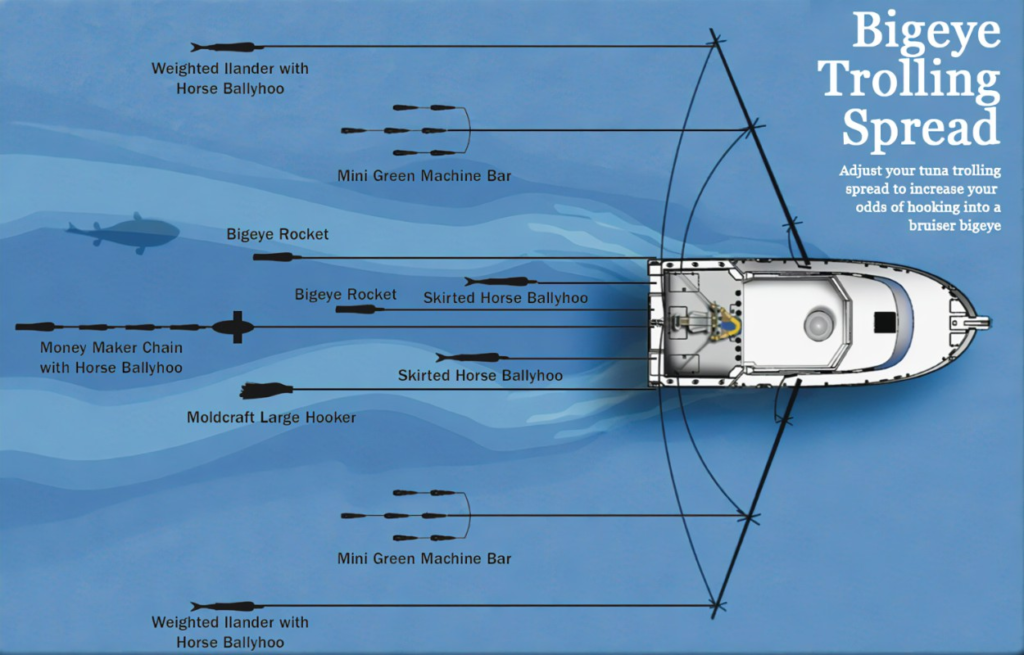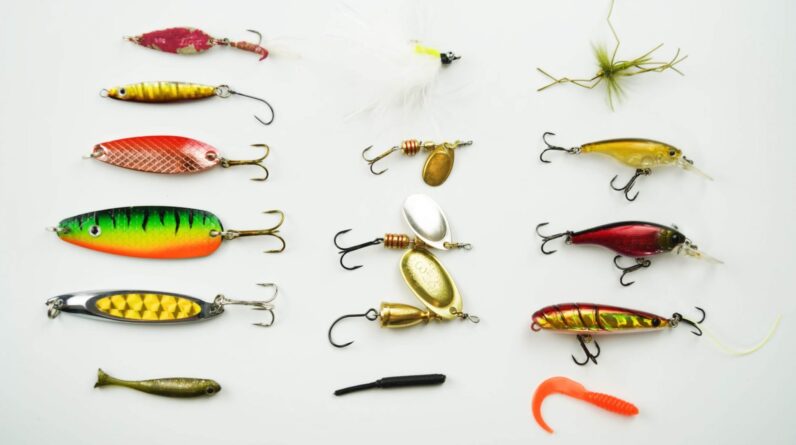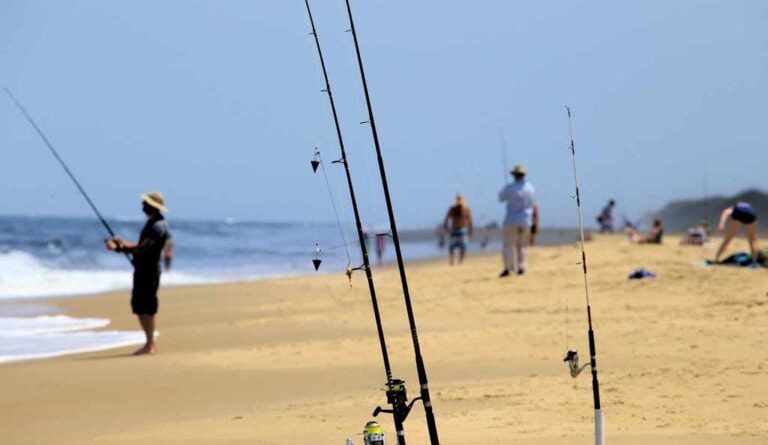Tuna fishing offers an exhilarating experience that merges the stunning expanse of the open ocean with the intense thrill of battling some of the sea’s most formidable creatures. Among the various methods for capturing these oceanic powerhouses, trolling stands out as one of the most effective and favored techniques, whether you’re after bluefin, yellowfin, albacore, or any other species of tuna.
At Cheerfulfisherman.com, we present to you an in-depth guide that covers all the essentials for successful tuna trolling. From selecting the right gear and bait to gaining insights into tuna behavior and perfecting your trolling strategies, this guide is designed to equip both novice and experienced anglers with the knowledge they need. With our expert tips and techniques, you’ll be well-prepared to take on the challenges of tuna fishing and experience the unparalleled excitement that comes with landing one of these ocean giants.
1. Understanding Tuna: Species, Behavior, and Habitat
1.1. Types of Tuna
- Bluefin Tuna: Known for their size and strength, bluefin tuna are the most sought-after species by anglers. They are primarily found in the Atlantic Ocean and the Mediterranean Sea.
- Yellowfin Tuna: Recognizable by their long, bright yellow fins, yellowfin tuna are abundant in tropical and subtropical waters around the world.
- Albacore Tuna: Also known as “longfin tuna,” albacore are smaller than bluefin and yellowfin but are highly prized for their white meat.
- Bigeye Tuna: Found in deep, warm waters, bigeye tuna are known for their large eyes and excellent quality meat.
- Skipjack Tuna: A smaller species, skipjack are often used as bait for larger tuna or are targeted for sport fishing in some regions.

1.2. Tuna Behavior and Migration Patterns
Understanding tuna behavior is key to successful trolling. Tuna are highly migratory fish, traveling long distances in search of food and favorable water temperatures. They tend to follow ocean currents and are often found near temperature breaks, where warm and cold water meet. Tuna are also schooling fish, so where there’s one, there’s often many more.
- Feeding Habits: Tuna are opportunistic feeders, primarily feeding on small fish like sardines, mackerel, and herring. They are also known to eat squid and other marine invertebrates.
- Water Temperature: Tuna prefer specific temperature ranges, which vary by species. Bluefin tuna, for example, thrive in cooler waters, while yellowfin tuna are more common in warmer regions.
2. Essential Gear for Trolling for Tuna
2.1. Rods and Reels
When trolling for tuna, it’s crucial to use gear that’s strong enough to handle the size and power of these fish.
- Trolling Rods: Heavy-duty trolling rods are essential for tuna fishing. Look for rods with a high line rating (50-130 lb) and a sturdy backbone to withstand the pressure of a hard-fighting tuna.
- Reels: Trolling reels should be large, with a high line capacity and a strong drag system. Lever drag reels are often preferred for their precision and ease of use. Brands like Penn, Shimano, and Daiwa offer excellent options for tuna trolling.

2.2. Line and Leaders
- Fishing Line: Braided line is commonly used for tuna trolling due to its strength and sensitivity. A line rating of 80-130 lb is recommended, depending on the size of the tuna you’re targeting.
- Leaders: Fluorocarbon leaders are preferred for their invisibility underwater. A leader of 100-200 lb test is standard, with length varying from 15 to 30 feet.
2.3. Hooks and Terminal Tackle
- Hooks: Use strong, corrosion-resistant hooks that can withstand the force of a tuna. Circle hooks are often preferred because they increase the likelihood of a clean hook set.
- Swivels and Snap Swivels: Heavy-duty ball-bearing swivels help prevent line twist, which is crucial when trolling at high speeds.
3. Choosing the Right Bait and Lures
3.1. Natural Baits
- Live Bait: Live bait, such as mackerel, herring, or squid, is highly effective for tuna trolling. Tuna are drawn to the natural movement and scent of live bait.
- Dead Bait: Rigged dead bait like ballyhoo or bonito strips can also be productive, especially when trolled at the right speed to mimic natural swimming action.
3.2. Artificial Lures
- Skirted Trolling Lures: These lures, often called “skirts,” are designed to mimic the movement of small fish or squid. Popular brands include Iland Lures, Williamson, and Black Bart.
- Diving Plugs: Plugs like the Rapala X-Rap Magnum or Yo-Zuri Hydro Magnum dive deep and create a lot of vibration, making them ideal for attracting tuna.
- Surface Lures: Poppers and stickbaits are great for targeting tuna near the surface. They create a lot of commotion, which can entice a strike from a nearby tuna.
3.3. Rigging Techniques
- Ballyhoo Rigging: Rigging ballyhoo with a circle hook and wire leader is a classic method for trolling. The key is to ensure the bait swims naturally and doesn’t spin in the water.
- Daisy Chains and Spreader Bars: These rigs imitate a school of fish and can be highly effective in attracting tuna to your spread. They’re often used with squid or small fish lures.

4. Trolling Techniques for Tuna
4.1. Speed and Depth Control
- Trolling Speed: The ideal trolling speed for tuna typically ranges from 5 to 10 knots, depending on the type of bait or lure you’re using. Faster speeds are generally used with artificial lures, while slower speeds are better for live or dead bait.
- Depth Control: Tuna can be found at various depths, so it’s important to adjust your trolling depth accordingly. Use downriggers or planers to get your lures down to the desired depth.
4.2. Spreading Your Lines
- Outriggers: Outriggers help spread your lines out wide, preventing tangles and allowing you to cover more water. This is especially useful when trolling with multiple lines.
- Staggered Depths: Stagger your baits and lures at different depths to increase your chances of a hookup. This can be achieved by using a combination of flat lines, downriggers, and planers.
4.3. Reading the Water
- Bird Activity: Birds are often a sign of baitfish, which in turn can indicate the presence of tuna. Look for diving birds and follow them to potential hotspots.
- Water Color and Temperature: Pay attention to changes in water color and temperature breaks. Tuna are often found near these areas, where warm and cool water meet.

5. Best Locations for Trolling for Tuna Around the World
5.1. Top Tuna Fishing Destinations
- The Outer Banks, North Carolina: Known for its excellent bluefin tuna fishing, the Outer Banks offers some of the best trolling opportunities in the United States.
- The Azores, Portugal: The deep waters around the Azores are home to large bluefin and bigeye tuna, making it a prime destination for big game anglers.
- Cabo San Lucas, Mexico: Cabo is famous for its yellowfin tuna, with fish often exceeding 200 pounds. The warm waters and abundant baitfish make it a year-round destination.
- Prince Edward Island, Canada: This area is known for giant bluefin tuna, with some fish reaching over 1,000 pounds. It’s a bucket-list destination for serious tuna anglers.
- Gulf of Mexico: The Gulf is home to both yellowfin and blackfin tuna, with excellent trolling opportunities off the coast of Louisiana, Texas, and Florida.
5.2. Seasonal Considerations
Tuna migrations are influenced by water temperature, food availability, and spawning cycles. Understanding these patterns can help you plan your trips around peak seasons.
- Bluefin Tuna: In the North Atlantic, bluefin tuna are most commonly targeted from June to November, with the best fishing occurring in late summer and early fall.
- Yellowfin Tuna: Yellowfin tuna are often caught year-round in tropical and subtropical waters, but the best months vary by location. In the Pacific, for example, peak season can be from July to October.
- Albacore Tuna: Albacore are typically targeted in the late summer and early fall, when they migrate closer to shore.
6. Safety and Conservation in Tuna Fishing
6.1. Safety Tips for Offshore Trolling
- Weather Monitoring: Always check the weather forecast before heading out. Offshore conditions can change rapidly, so it’s essential to be prepared.
- Communication: Ensure you have a reliable VHF radio and a backup communication device like a satellite phone. Staying in touch with other boats can also help locate tuna schools.
- Safety Gear: Equip your boat with all necessary safety gear, including life jackets, flares, a first aid kit, and an EPIRB (Emergency Position-Indicating Radio Beacon).
6.2. Sustainable Tuna Fishing Practices
- Catch and Release: Consider practicing catch and release, especially with larger or overfished tuna species like bluefin. Use circle hooks to reduce injury and handle the fish carefully to ensure a successful release.
- Respect Regulations: Always follow local fishing regulations, including size and bag limits. These rules are in place to help maintain healthy tuna populations for future generations.
- Tagging Programs: Participate in tagging programs to help scientists track tuna migrations and gather data on their populations. This information is vital for the sustainable management of tuna fisheries.
7. The Thrill of the Catch: Techniques for Fighting and Landing Tuna

7.1. Hooking Up
- The Initial Strike: When a tuna strikes, it will often be a powerful and fast hit, quickly peeling off line from your reel. It’s essential to maintain control during this initial run by adjusting your drag settings appropriately. Too tight, and you risk snapping the line; too loose, and the fish might shake the hook or run too far.
- Setting the Hook: With circle hooks, the hook sets itself as the tuna swims away, so avoid jerking the rod. Instead, maintain steady pressure to drive the hook home.
7.2. Fighting the Fish
- Rod Positioning: Keep the rod tip up to maintain tension on the line, but avoid overextending it. A steady, controlled posture will help you conserve energy during a prolonged fight.
- Using the Drag: Adjust the drag as needed during the fight. As the tuna tires, you can gradually increase the drag pressure to gain line back. Be mindful not to tighten it too much, as a sudden surge could break the line.
- Pumping the Rod: Use the pump-and-wind technique to gradually bring the tuna closer. Lift the rod slowly, then reel in line as you lower the rod tip. This method minimizes stress on your arms and maximizes efficiency.
7.3. The Final Battle
- Circling: As the tuna nears the boat, it will often begin to swim in circles under the boat in what’s known as a “death spiral.” This is a critical phase where many fish are lost. Keep the line tight and follow the fish with the rod tip to prevent the line from rubbing against the boat or propeller.
- Leadering the Fish: Once the tuna is close enough, a crew member should be ready to grab the leader. This person needs to be strong and experienced, as tuna often make sudden, powerful runs even when they appear tired. Leadering is a delicate process that requires skill to avoid snapping the line or losing the fish.
- Gaffing or Releasing: If you’re keeping the fish, a well-placed gaff shot, typically in the head or behind the pectoral fin, will help secure the catch. For those practicing catch and release, ensure the fish is properly revived before letting it go.
8. Preparing and Cooking Tuna: From Ocean to Table
8.1. Handling Your Catch
Proper handling of your tuna catch is crucial to preserve its quality.
- Bleeding the Fish: After landing the tuna, the first step is to bleed it out. This helps in maintaining the quality of the meat by removing blood, which can spoil quickly. Make a cut behind the pectoral fin or along the gills and let the fish bleed out in a controlled manner.
- Cooling: Tuna meat is highly sensitive to temperature. Immediately place the fish in an ice slurry to cool it down quickly. This will help preserve the freshness and texture of the meat.
8.2. Filleting Techniques
- Tools: Use a sharp fillet knife and ensure you have a clean, flat surface to work on.
- Procedure: Start by cutting along the backbone from head to tail, separating the top loin from the rib cage. Remove the belly meat, then repeat on the other side. Carefully trim any dark bloodlines or sinew to improve the quality of the fillets.
8.3. Cooking Methods
Tuna is a versatile fish that can be prepared in various ways, from raw dishes to grilled steaks.
- Sashimi and Sushi: Tuna, especially species like bluefin and yellowfin, is highly prized for sashimi and sushi. Ensure your fish is fresh and properly handled if preparing it raw. Slice thinly against the grain for the best texture.
- Seared Tuna: A popular method is searing tuna steaks. Coat the fillet in sesame seeds or spices, then sear each side quickly over high heat, leaving the center rare.
- Grilled Tuna: Grilling is an excellent way to prepare tuna steaks. Marinate the fillets in olive oil, lemon juice, and herbs, then grill over medium-high heat for a few minutes on each side.
- Tuna Salad and Sandwiches: Canned or jarred tuna can be used for salads or sandwiches. For a gourmet twist, use fresh seared tuna slices in your salad or sandwich.
9. Common Challenges and Solutions in Tuna Trolling
9.1. Line Breaks and Gear Failures
Tuna are powerful fish, and it’s not uncommon for lines to snap or gear to fail. Prevent this by regularly inspecting your lines, knots, and equipment. Use top-quality gear designed for big game fishing and always carry backups.
9.2. Avoiding Shark Interference
In many tuna fishing spots, sharks can be a problem, often stealing your catch. If you’re experiencing shark issues, try speeding up your retrieve when a tuna is hooked or moving to a different location. Some anglers also use specialized rigs designed to deter sharks.
9.3. Managing Multiple Hookups
Tuna often travel in schools, so it’s possible to hook multiple fish at once. This can be chaotic, especially if you’re running several lines. The key is coordination—each angler should focus on their fish, keeping lines from crossing. If necessary, cut the line on smaller fish to focus on landing the larger ones.

10. Conclusion: The Rewards of Trolling for Tuna
Trolling for tuna is more than just a fishing trip; it’s an adventure that tests your skills, endurance, and knowledge of the sea. The thrill of the hunt, the challenge of the fight, and the satisfaction of landing a powerful tuna are experiences that keep anglers coming back year after year.
Whether you’re a seasoned angler or new to the sport, the tips and techniques in this guide will help you increase your chances of success on your next tuna trolling expedition. Remember, the key to mastering tuna fishing is patience, practice, and a deep respect for the ocean and its inhabitants.
As you continue to refine your trolling techniques and knowledge, you’ll not only become a more successful angler but also develop a greater appreciation for the art and science of big game fishing. And when you finally reel in that giant tuna, you’ll know that all the preparation and effort were well worth it.
11. Resources and Further Reading
For those looking to dive deeper into the world of tuna fishing, here are some resources and recommendations:
- Books:
- “The Complete Guide to Saltwater Fishing” by Al Ristori – A comprehensive guide covering all aspects of saltwater fishing, including tuna trolling.
- “Bluefin Tuna: Biology and Conservation” by Barbara A. Block – An in-depth look at the biology and conservation of bluefin tuna.
- Websites and Forums:
- Cheerfulfisherman: Offers articles and tips from experts in the field of big game fishing and more.
- The Hull Truth: A popular forum where anglers share tips, stories, and advice on tuna fishing and other offshore pursuits.
- YouTube Channels:
- Saltwater Experience: Features tuna trolling techniques and real-world fishing experiences.
- BlacktipH: Covers a wide range of saltwater fishing topics, including tuna fishing.
By continuously learning and staying updated with the latest techniques and technologies, you’ll ensure that your tuna trolling adventures are both successful and sustainable for years to come.






